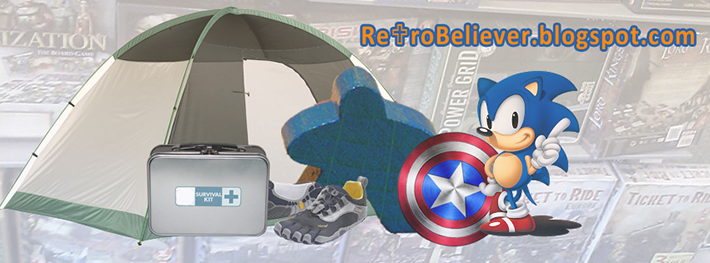To me, Dice Masters has many wonderful qualities: it's a customizable experience in which you choose your characters and basic actions; you get to roll dice, which is usually (but not always) fun; you can play with popular Marvel or DC characters, such as Batman, Superman, Captain America, and Iron Man; it's portable; and, (a quality that is appealing to me because I'm a bit fastidious with protecting my game items) people can bring their own collections and play against other people. There is so much to like about this game, and yet the one thing that bothers me is some of the imagery, specifically the comic book depictions of female superheroes. Let me provide some examples.
 Example 1: Spider-Woman
Example 1: Spider-WomanOut of the Amazing Spider-Man Dice Masters set, Spider-Woman is one of the borderline depictions, in my opinion, but I do have an issue with the form-fitting costume in the chest area. Some people may disagree, but I think the shape alone suggests body paint and not a costume, which is not so far from nudity.
 Example 2: Black Widow
Example 2: Black Widow
Another card out of the Amazing Spider-Man set, Black Widow is a decent, low-cost character that bares just a bit too much mid-cleavage. Realistically, I would expect a superhero's suit to be armor-like and protective, but that's not the case in comics, apparently.
 Example 3: Magik
Example 3: MagikFrom the X-Men Dice Masters set, Magik is a fine character statistically speaking, but there is a lot of bare breast in this art.
 Example 4: Catwoman
Example 4: CatwomanFrom the DC Justice League Dice Masters set, Catwoman's rare card offers an intriguingly random ability, but she is also one of those characters with barely acceptable art (no pun intended). Her body shape is voluptuously depicted here, but at least her chest is somewhat obscured with the darkness of her costume. I was on the fence about this one.
As I have stated in past posts, many people may find my concerns unfounded, but I understand the struggles of the male mind, and the art in these cards do nothing to help a young boy or man NOT to objectify women or avoid those feelings that one should have for one's wife only. I believe that God has put it upon my heart to keep my family's gaming on the purer side, sexually speaking, and to protect my young boys from the rampant sexuality in today's society, even in games.
With that in mind, how do I handle questionable art in Dice Masters? Simply put, I sell the cards and dice, or I exclude the cards from my and my sons' collections because there are so many heroes to collect and use, even female ones. I've found more appropriate Black Widow and Catwoman art in other sets, and there are female superheroes that are portrayed non-sexually, such as Marvel Girl, Rogue, and even Psylocke (the art thankfully depicts her from the neck up). I'm certainly not for banning all female characters, but I do recommend being judicious with the art in the game, even if the female hero has a powerful in-game ability. This doesn't mean that there aren't characters about which I am indecisive. One example is Wonder Woman; traditionally, her costume bares a lot of leg, but she is rarely portrayed (in Dice Masters, anyway) in a way that suggests she's selling more than being a hero. I suppose there are nuances that I detect in the game that drive my conviction, such as character poses and intent.
In any case, these are my opinions based on my personal conviction as a follower of Christ. If you are an atheist or follower of another religion, your opinion may vary. However, I don't believe it can be denied that women are depicted in overly sexual ways in media today. Whatever your belief system, I recommend that every parent examine the art in a game and determine if it suits his or her family. Even male art can be inappropriately sexual or frightening or grotesque. By taking control of the art in your home, you can guide your children through the tricky waters of today's sexually liberal society and, at the same time, train them to think for themselves to better identify mental dangers... and avoid them.

